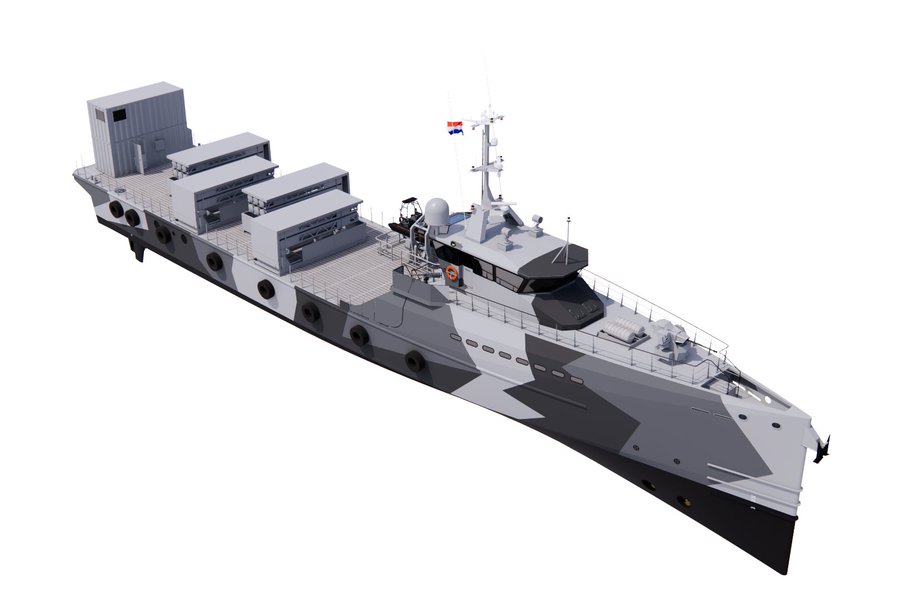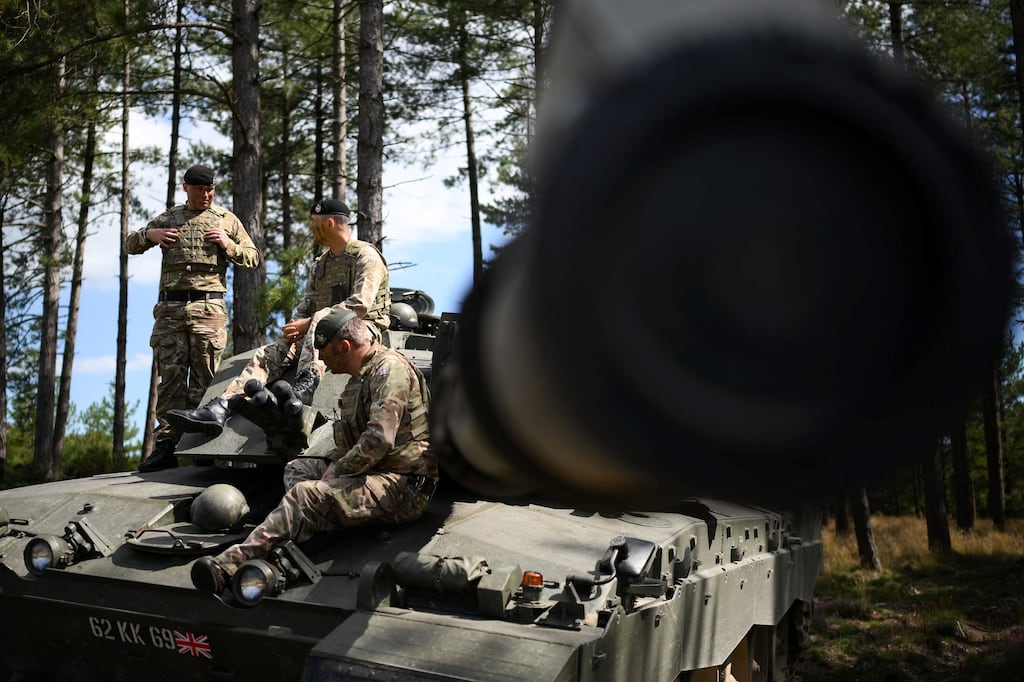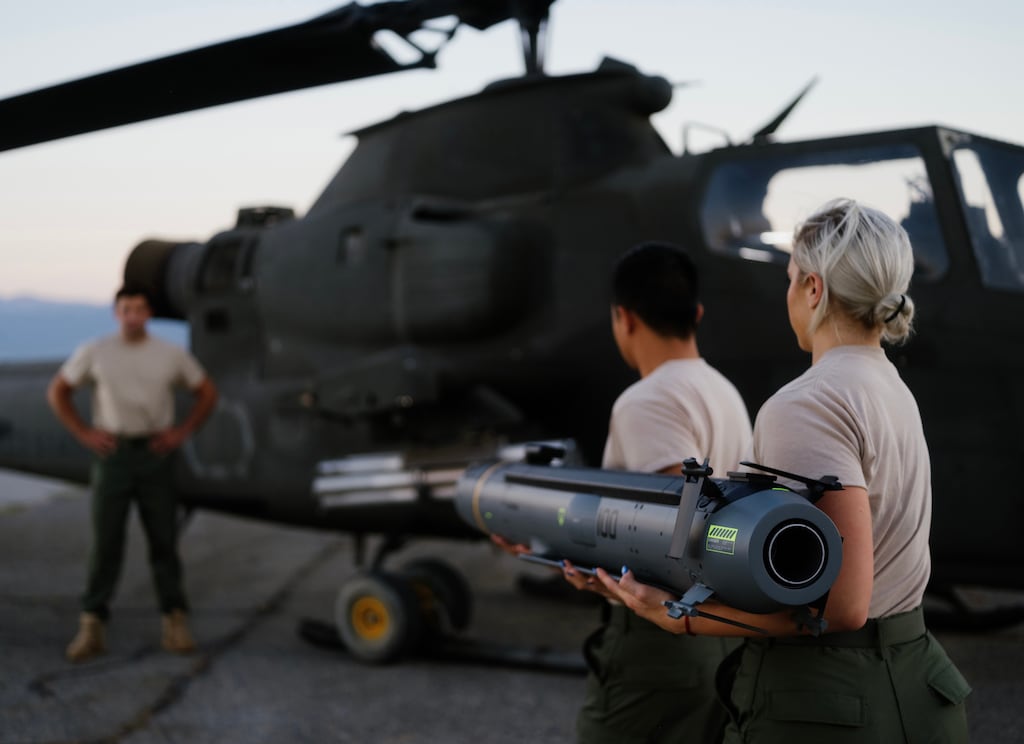Dutch Navy to buy armed sidekick ships for its air-defense frigates
PARIS — The Netherlands plans to buy two support vessels that will act as sidekicks to its air-defense frigates, packing additional missiles to defeat swarms of anti-ship missiles and drones, for an investment in the range of €250 million to €1 billion (US$279 million to $1.1 billion).
The support vessels will also be able to provide fire support for amphibious operations using long-range loitering munitions, as well as equip underwater drones to track and identify suspicious activity in the North Sea, Dutch State Secretary for Defence Gijs Tuinman said in a letter to parliament on Tuesday.
The Royal Netherlands Navy needs to strengthen its air defenses and firepower for operations in the “higher violence spectrum,” as well as capabilities to protect critical North Sea infrastructure such as drilling platforms and data cables, according to the Ministry of Defence.
“These vessels are needed to better protect the Netherlands and allies in the event of a threat,” Tuinman said in a post on X, formerly Twitter, describing the two future support vessels as “sailing toolboxes” for the lead vessel. “The ships are capable of carrying a lot of equipment, such as additional firepower and long-range anti-aircraft missiles.”
Dutch shipyard Damen will build the vessels, with Israeli Aerospace Industries supplying its Barak ER surface-to-air interceptor, Harop long-range loitering munition as well as electronic-warfare equipment. Buying the missiles, long-range munitions and EW equipment from a single supplier will simplify integration work, the defense ministry said.
The Dutch Navy’s air-defense frigates will continue to be equipped with RTX’s SM-2 surface-to-air missile, and the frigate’s radar and fire-control systems will handle launch and targeting for the missiles on the support vessels.
The support ships will each have a crew of at least eight sailors. While current technology isn’t sufficiently mature for fully autonomous vessels, the new ships will provide the Navy with experience in operating with small crews, as a first step toward unmanned vessels, Tuinman said.
The first iteration will be available for the North Sea in 2026, and both vessels will be fully operational in 2027. Equipment on the support vessels will be packed in containers, meaning air-defense kit can be swapped out for long-range munitions based on the specific needs of the mission, according to the letter.
The Barak ER air-defense missile that will equip the support ships has a range of up to 150 kilometers and can target anything from fighters to tactical ballistic missiles and glide bombs, with eight missiles packed in a vertical launcher, according to the company’s spec sheet.
The Netherlands also looked at MBDA’s Aster missile, which the minister said can’t be fired from a container, while Rafael Advanced Defense Systems’ Stunner missile didn’t entirely fit the Dutch requirements.
The Netherlands needs to be prepared for swarming tactics, with massive and simultaneous attacks of anti-ship missiles and drones, which require larger stocks of missiles, Tuinman told parliament. Additionally, RTX is halting production of the SM-2, and the successor missile SM-2 Block IIICU isn’t compatible with the fire control on the Dutch air-defense frigates, the minister said.
Adversaries in coastal areas increasingly have access to advanced sensors and long-range weapons, which is changing doctrine for amphibious operations to a larger number of simultaneous landings, according to Tuinman. The IAI loitering munitions have a range of several hundreds of kilometers, and will be able to linger in the target area for some time before use, he said.
Meanwhile the threat to Dutch infrastructure in the North Sea remains undiminished, with Russia continuing to map the infrastructure in what appear to be preparations for disruption and sabotage, the minister said. The Navy escorted a Russian research vessel in June and July that spent several days in the Dutch part of the North Sea, with intelligence services suspecting the Russians were investigating opportunities for potential future sabotage.
The Ministry of Defence plans to buy off-the-shelf underwater drones equipped with long-range sensors to spot suspicious activity, while the support vessels will also be fitted with sensors to record suspicious vessels.
THIS PAGE WAS POSTED BY SPUTNIK ONE OF THE SPUTNIKS ORBIT BLOG


















